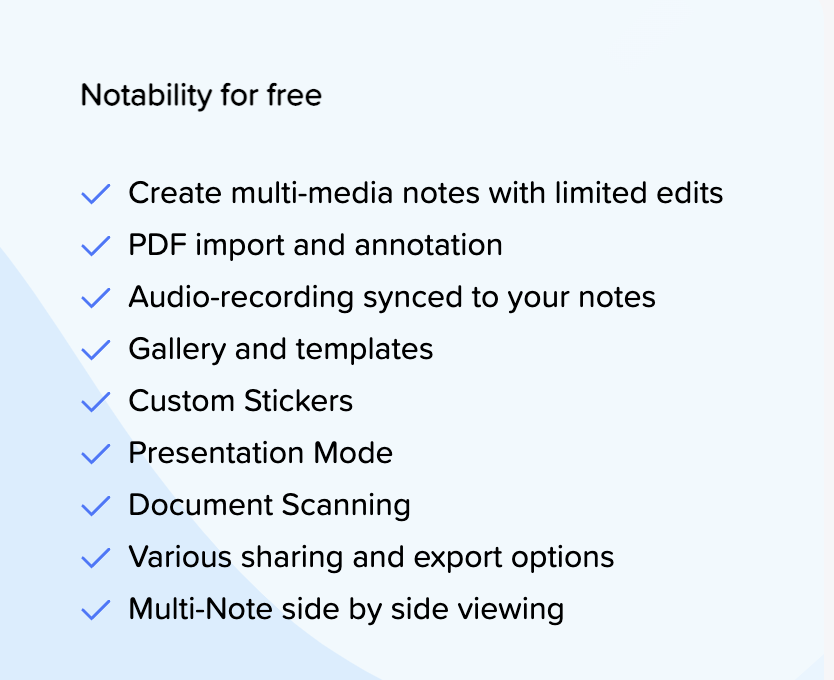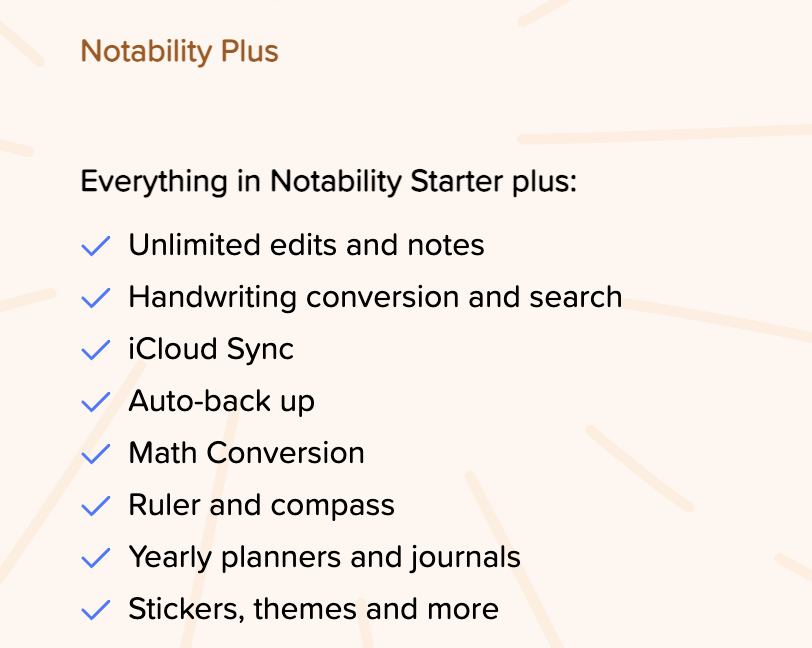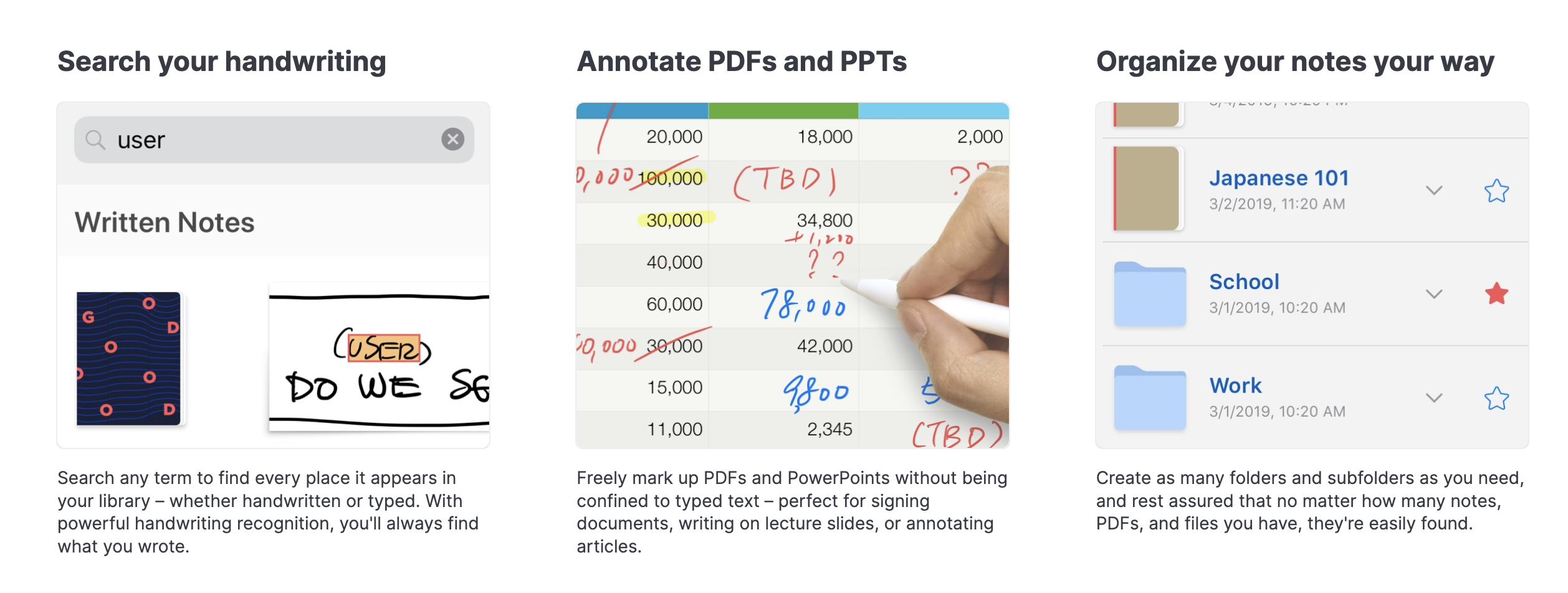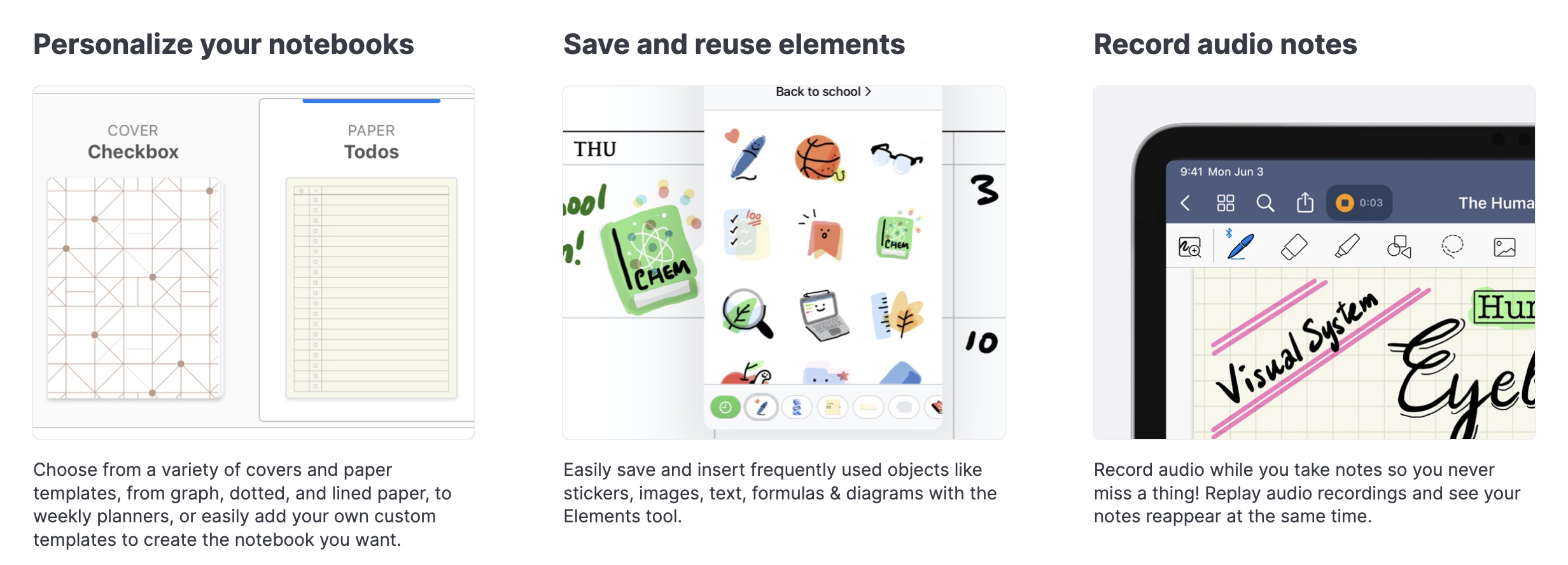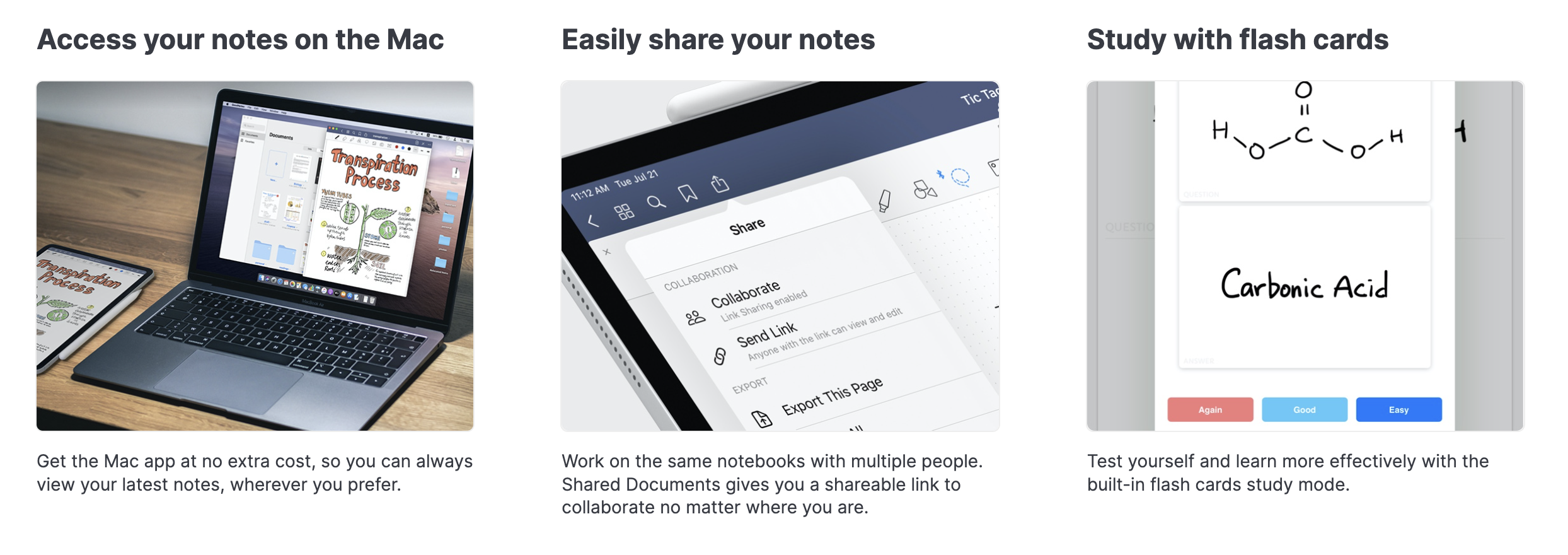
OVERVIEW
Notability reached out to Berkeley Innovation with a problem: how to increase the conversion of free and legacy users to subscribers for Notability’s recently released premium subscription. They wanted to get a better idea of their user base and discover what features would entice users to join the premium plan.
To solve this, my team and I focused heavily on UX research to further understand users and their needs. As a final deliverable, we presented our research findings as well as a “features wish list” for the Notability team. I had the pleasure of working with some of Notability's marketing and design team: Cleary Chizmar, Gabi Parsons, and Ambika Vohra.
As a UX Research consultant, I took part in the entire UXR process, working together with my team to equally distribute our tasks (crafting survey, recruiting participants, interviewing, summarizing findings, presenting results to the Notability team, etc.).
As the phase 1 research sprint lead, I guided my team through the beginning stages of our project by creating a research plan, conducting secondary research, creating our survey on Qualtrics, and finding potential participants for our interviews.

Notability is an iOS note-taking application released in 2010, commonly used on iPad with a stylus. It is one of the best-selling note-taking applications and offers handy features for a variety of users (students, teachers, and more).
How might we better understand different user groups and their pain points to increase the conversion of free and legacy users to Notability premium subscribers?

As a final deliverable, Notability requested a report of research findings consisting of: data from surveys + interview insights, user contact information for future outreach, and a feature wish-list coming directly from users themselves.
Also, they gave us the option to create wireframes, mockups and prototypes for them... so some of the team (including myself) took advantage of that opportunity!
Our final poster for the Berkeley Innovation showcase and overall project:
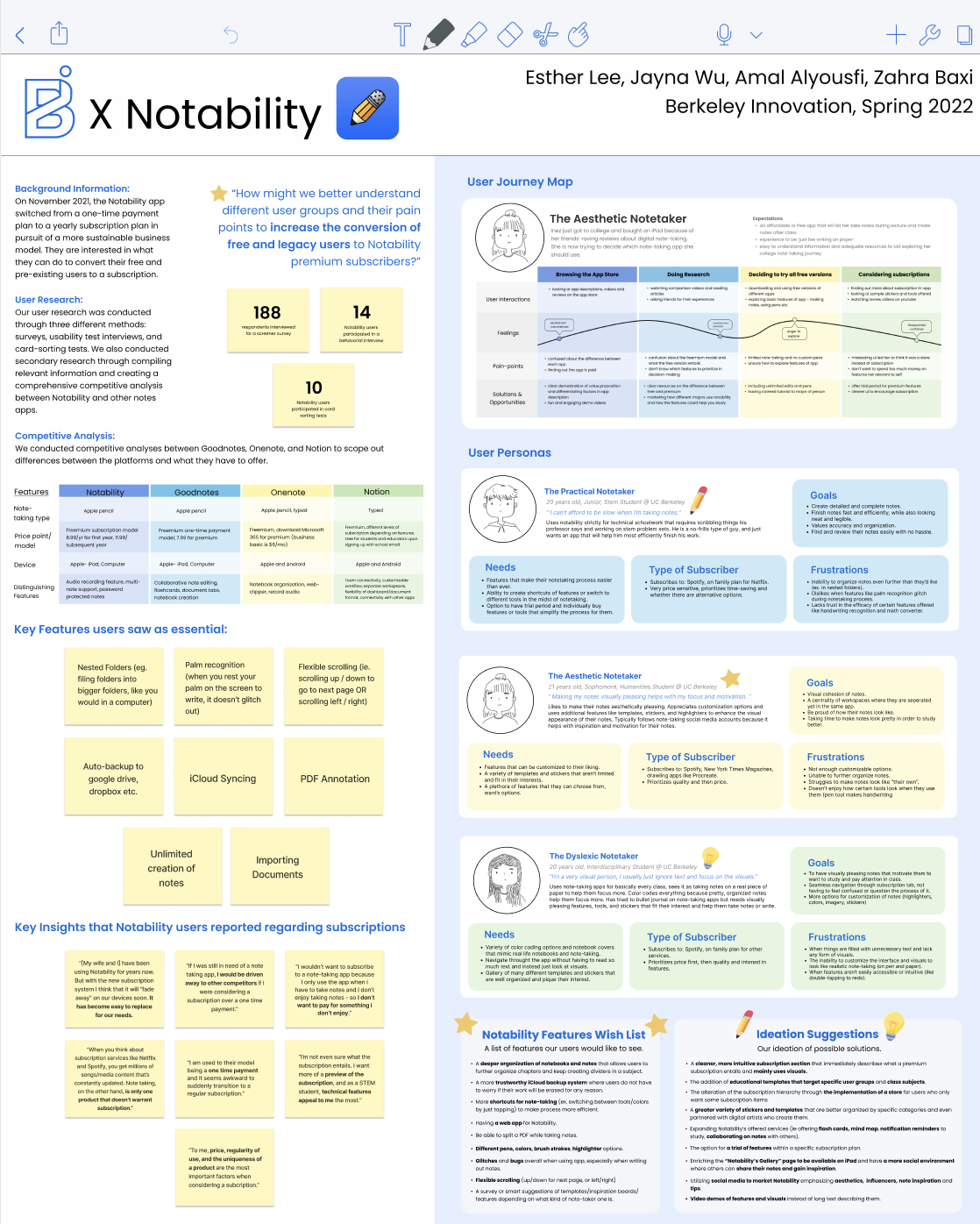

To begin, we wanted to get a deeper understanding of the scope of the problem through secondary research.
NOTABILITY'S WEBSITE
We explored their website to see if there was more to learn about the brand and product (features, offerings, values) that we didn't already know.
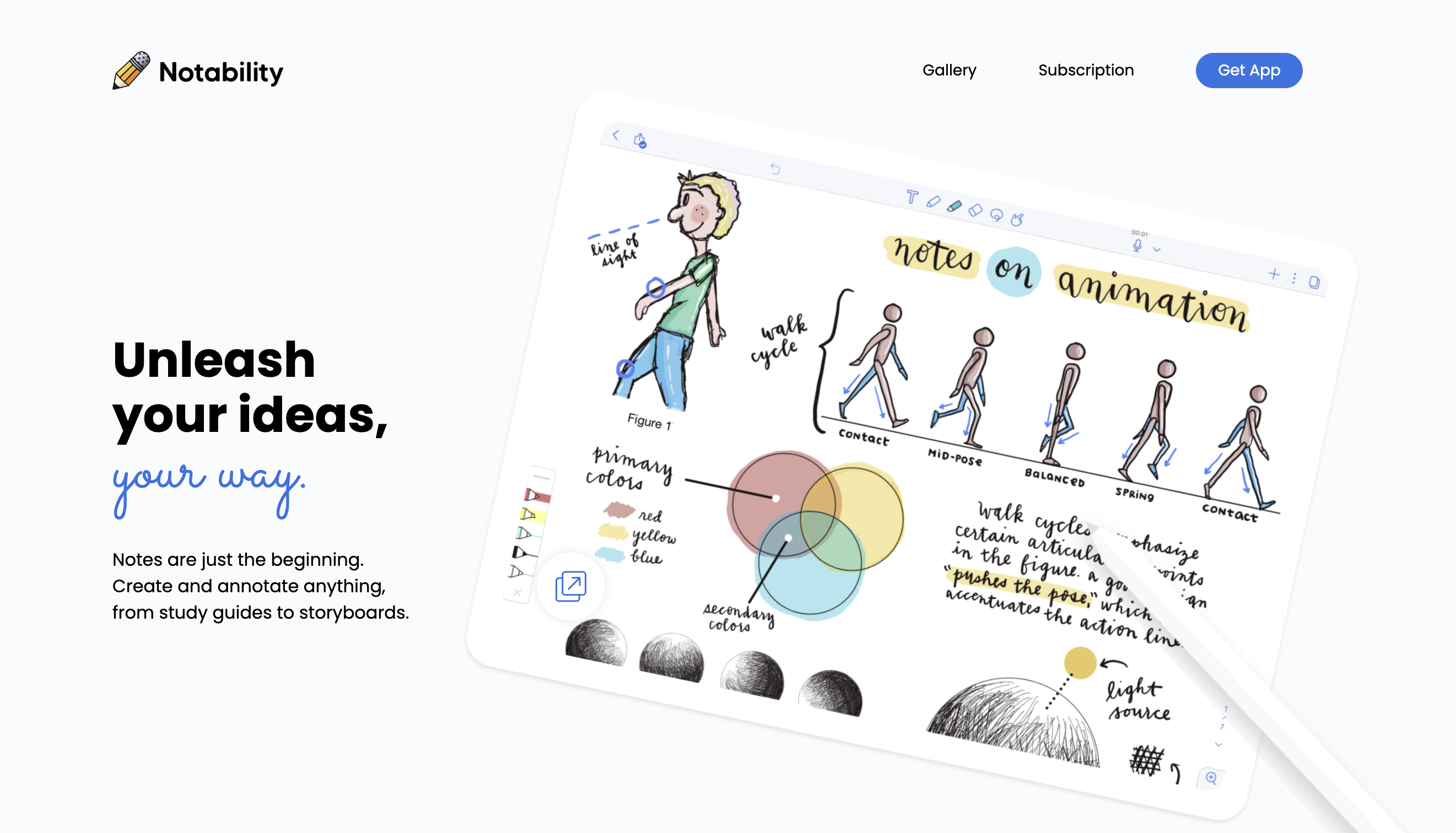
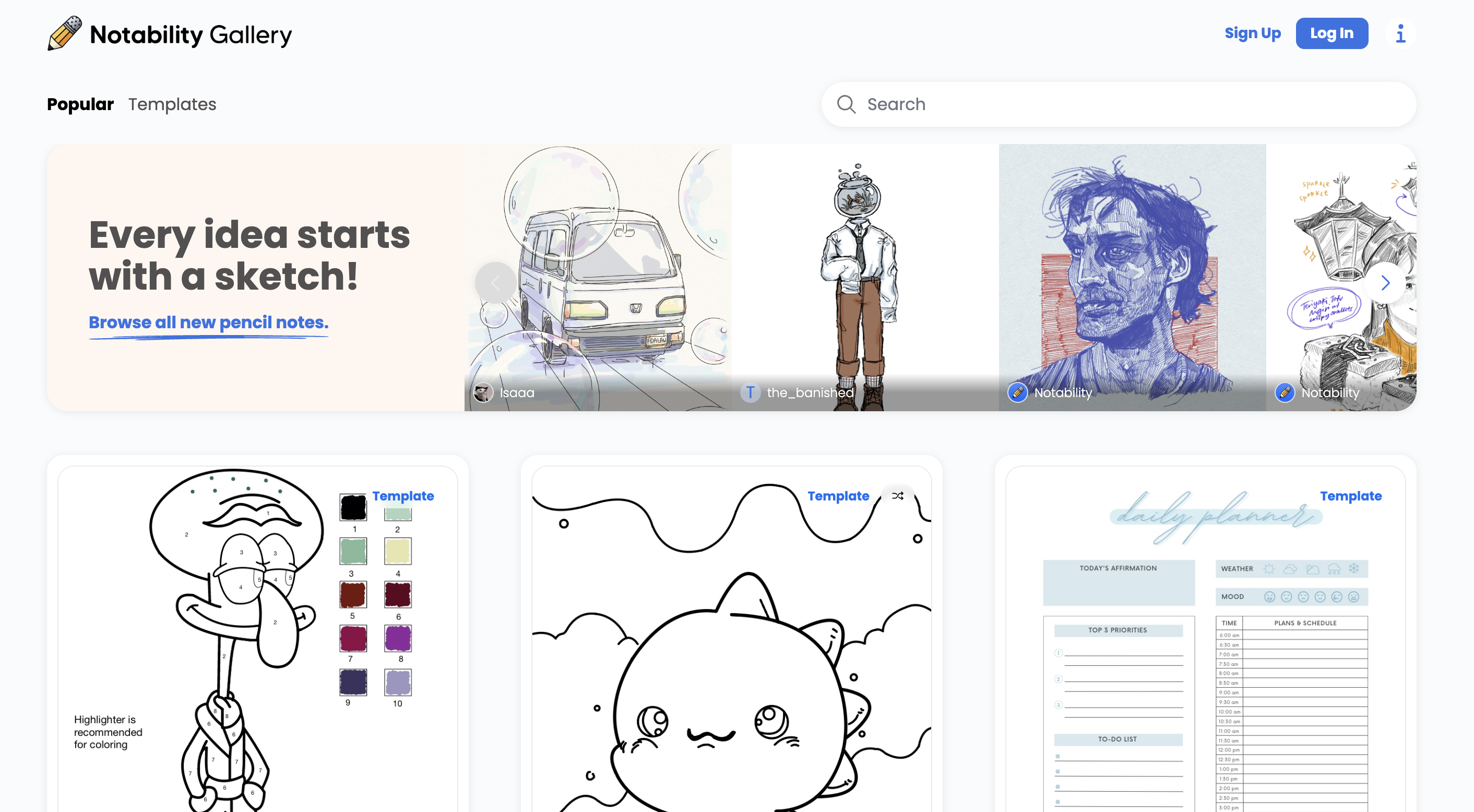
SOCIAL MEDIA PRESENCE
Social media helped us understand their marketing tactics and image. It's important to have some form of media presence. This helps users connect with the brand, and show people what your product is all about.
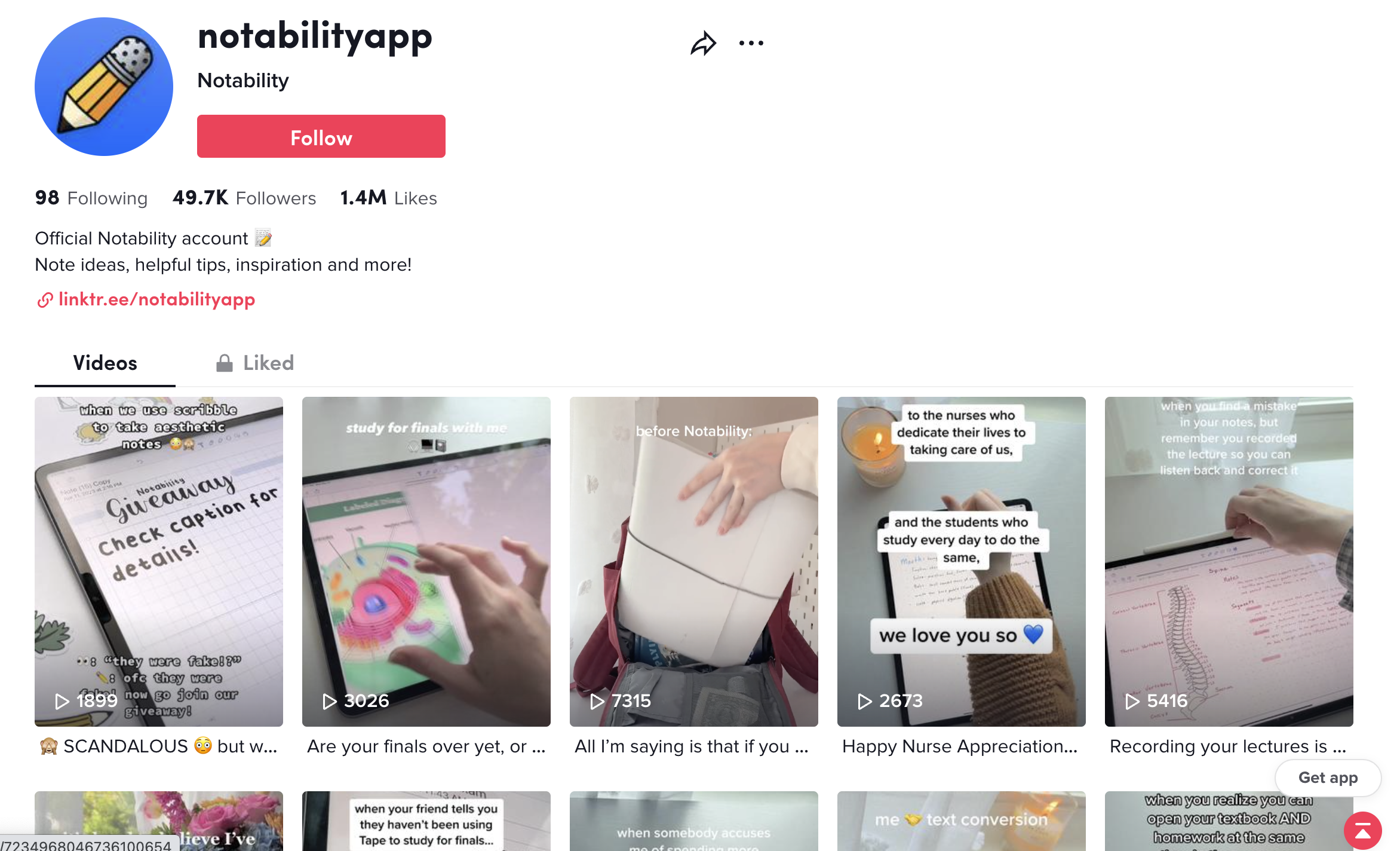
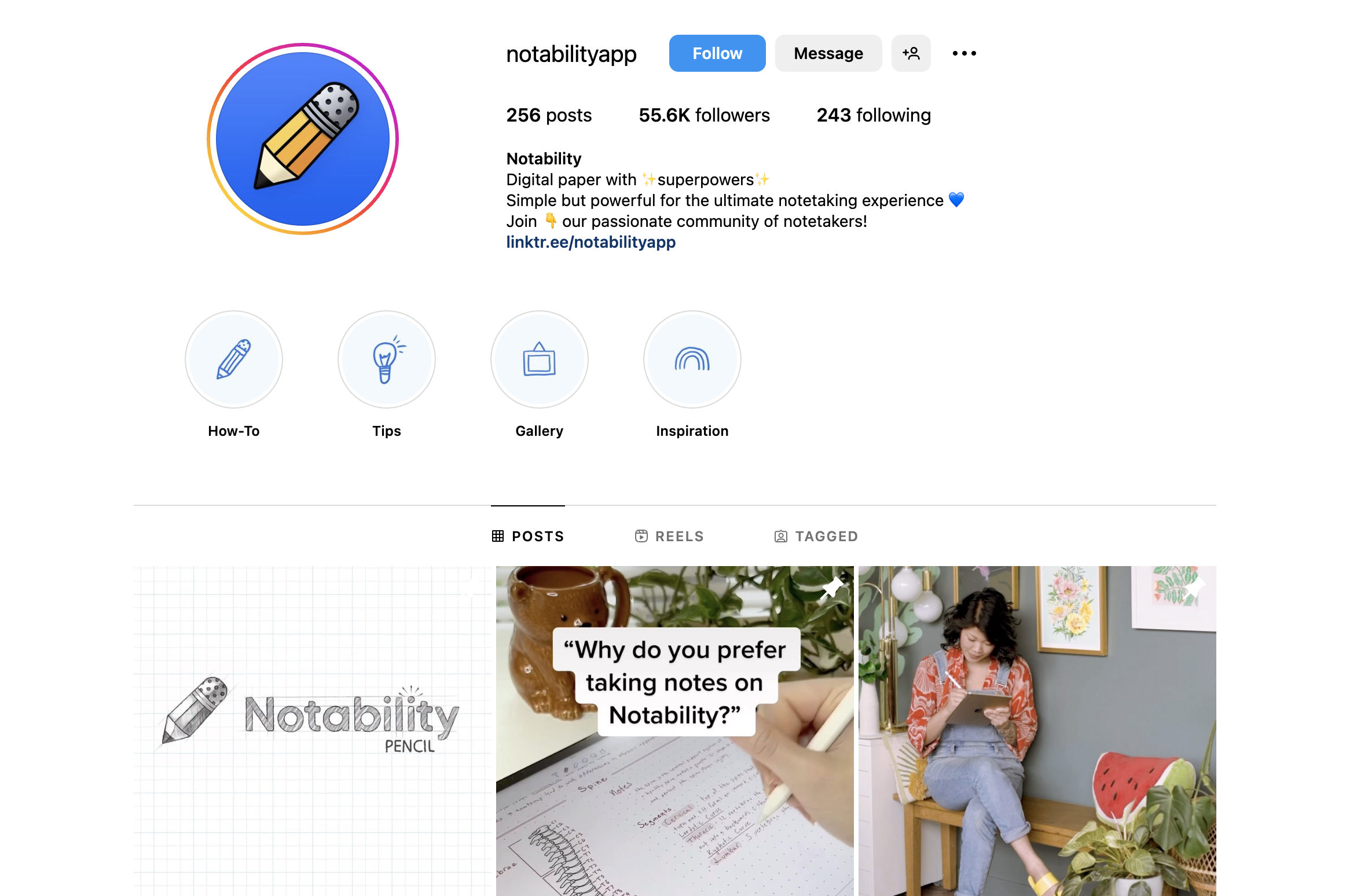
COMPETITIVE ANALYSIS
We compared Notability with its main competitors and what sets them apart.

THE MAIN COMPETITOR? GOODNOTES
They had the most similar product and features. Let's look at their social presence:
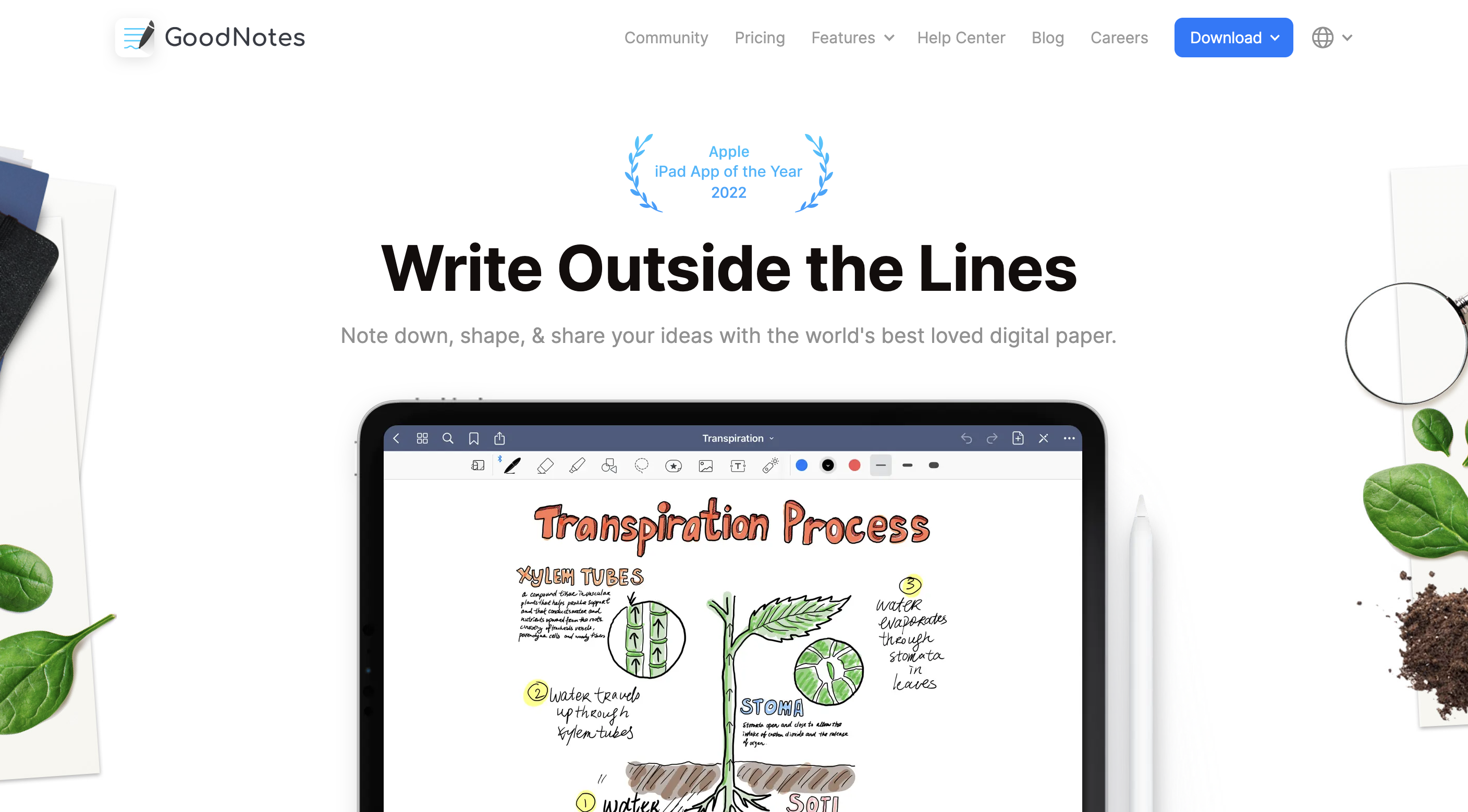
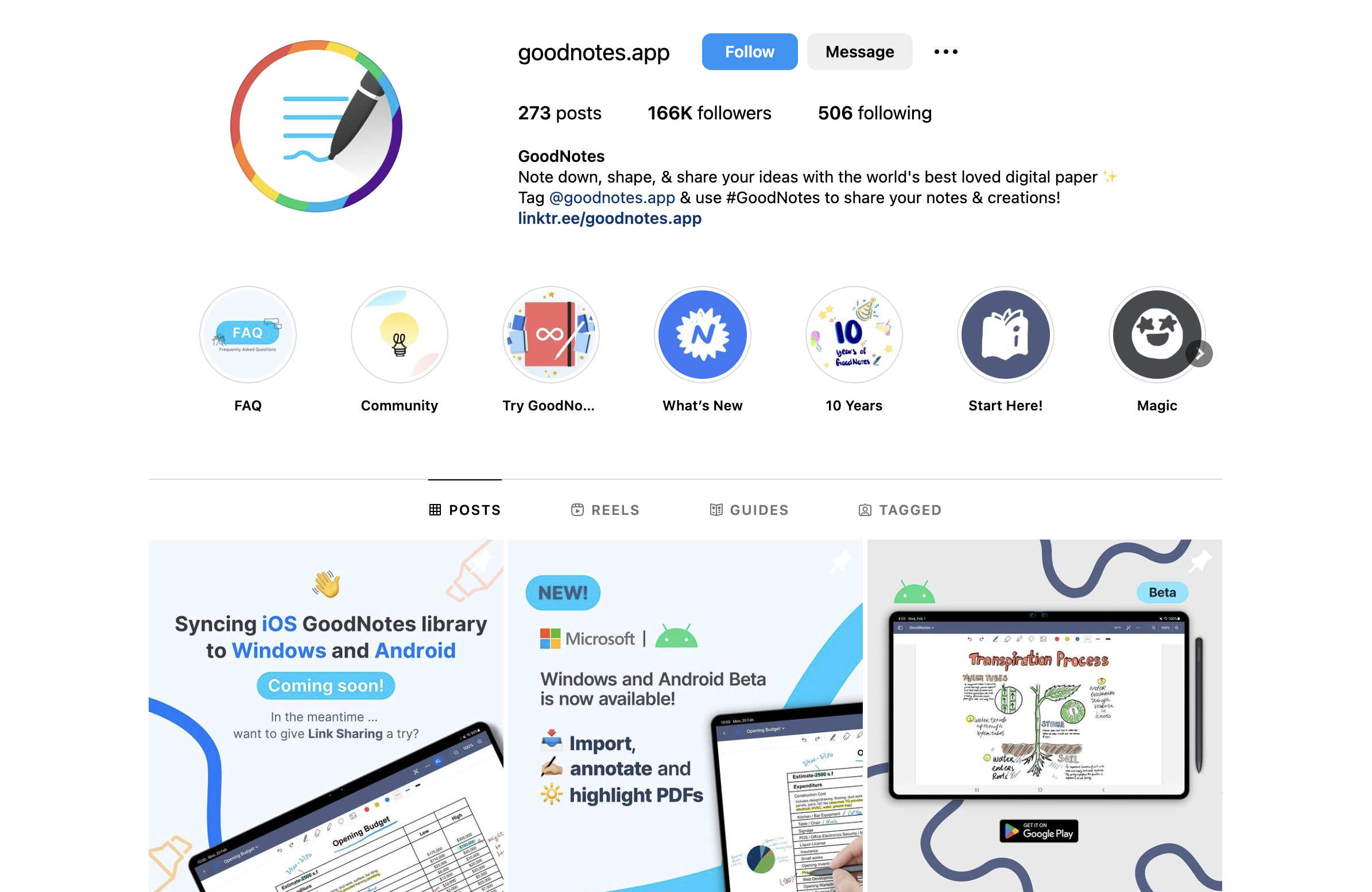
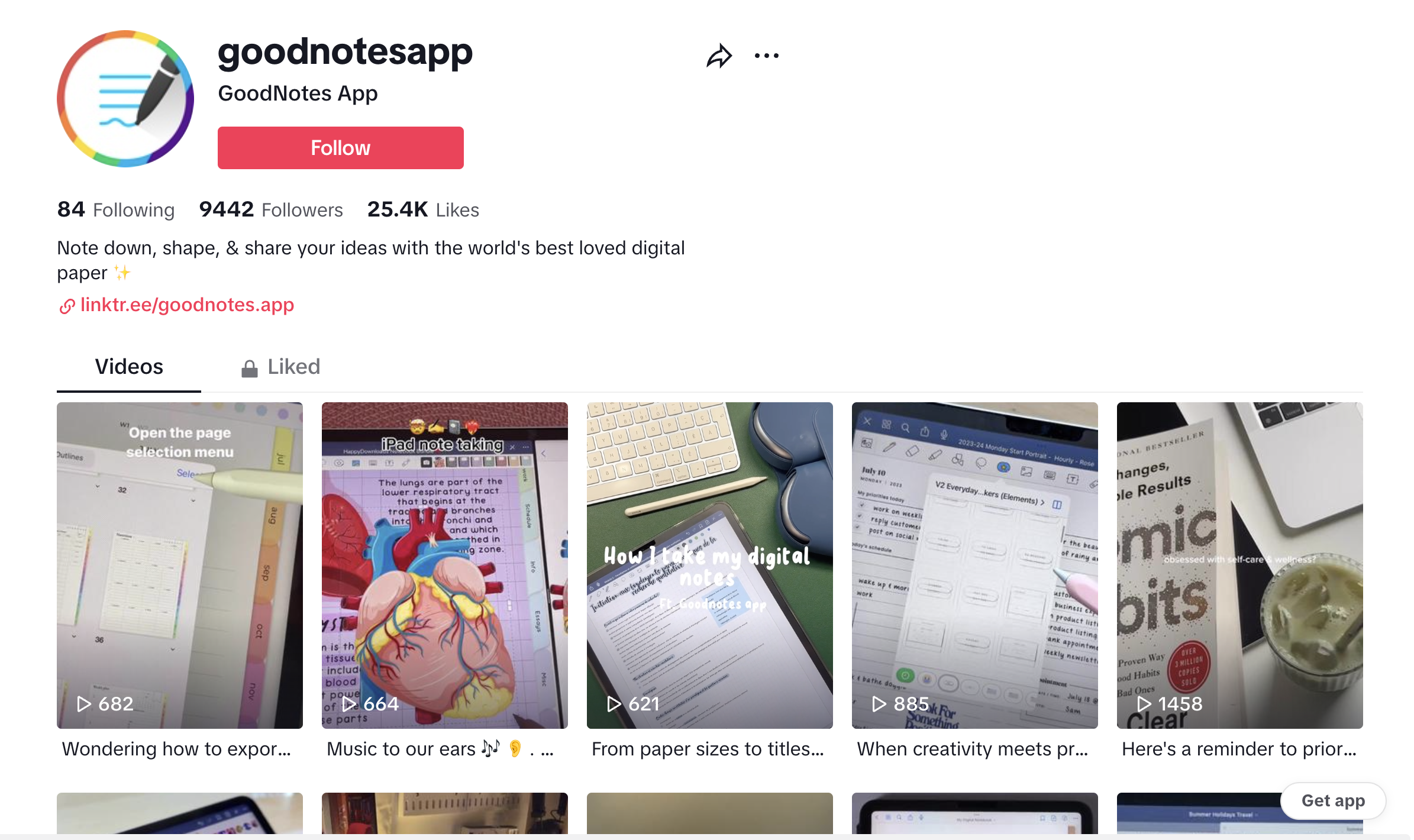
FEATURES COMPARISON:
